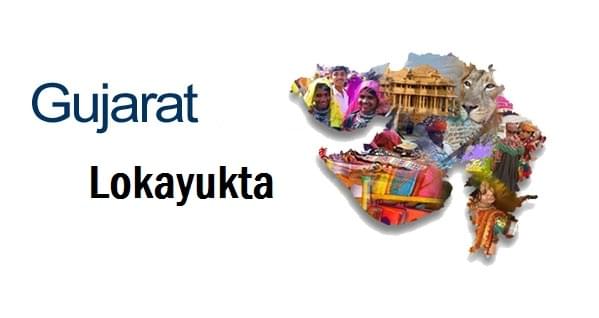Analysis
The Curious case of Gujarat Lokayukta
Muralidhar S
Apr 07, 2013, 11:00 PM | Updated Apr 29, 2016, 01:39 PM IST
Save & read from anywhere!
Bookmark stories for easy access on any device or the Swarajya app.


The appointment of Gujarat’s Lokayukta has seen several dramatic developments. The latest is the passage of the Gujarat Lokayukta Aayog Bill, 2013 that redefines the process of selecting the state’s Lokayukta. Coming as it does in the wake of a series of court battles, the government’s critics have charged it with diluting the powers of the ombudsman. Before examining the merits of the charge, it is important to contextualize it.
Lokayukta timeline
1986: Original Lokayukta act enacted by the Gujarat legislature.
November 2003:Lokayukta Justice S.M Soni resigns
July 2004:Nawal Kishore Sharma, former Congress general secretary, appointed as Governor
August 2006: After a gap of 3 years, Chief Minister Modi and the then Chief Justice of the Gujarat High Court JusticeY.R. Meena approve the candidature of Justice K.R Vyas and forward it for Governor’s approval. The file remains pending with the Governor for 3 more years.
August 2007: Congress led government in Maharashtra appoints Justice K.R Vyas as Chairman of Maharashtra State Human rights commission
September 2009: Governor returns the file saying Justice K.R Vyas is not available for appointment.
November 2009: Senior Congress politician Kamala Beniwal takes charge as Gujarat Governor
December 2009:Trouble begins. Within days of taking charge, Governor requests the newly sworn in Chief Justice (Justice S.J Mukhopadhaya) to suggest a panel of names for appointment to the post of Lokayukta. (The state government later went to the court saying the Governor had no role to play here and must only act on the advice of the Council of Ministers. The Supreme Court agreed and said the Governor misjudged her role and added that her ‘attitude is not inconformity, or in consonance with the democratic set up ofgovernment envisaged in our Constitution’)
February 2010: CM writes to the Chief Justice to suggest a panel of names. The Chief justice sends a panel of 4 names.
March 2010: Trouble deepens. CM makes an attempt to consult with the Leader of Opposition to select a Lokayukta from among the panel sent by the Chief Justice. Leader of Opposition refuses to participate saying the Governor is already taking care of the process of appointing a Lokayukta.
The Council Of Ministers approves the name of Justice J.R Vora and sends it for Governor’s approval. Governor does not pass any orders. Instead, she writes to the Attorney General of India on the process to be followed. (Again, the state government objected to this action. The Supreme Court upheld the state’s view). The Attorney General replies that the Chief Justice ought to send only one name and not a panel of names. (State government opposed this and said a panel of names must be sent. The Supreme Court upheld the Attorney General’s view)
She also writes to the Chief Justice (again!) asking between Justice R.P.Dholakia, who was the President of the Gujarat Consumer Disputes Redressal Commission and Justice J.R. Vora, who would be a better choice. The Chief Justice chooses the former. However, the Governor does not issue a letter of appointment.
May 2010: Governor writes to the Chief Justice to recommend only one name.
December 2010: This time, the Chief Justice recommends the name of Justice S.D Dave since Justice J.R Vora, in the meanwhile, was appointed elsewhere.
February 2011: CM writes to the Chief Justice reiterating his request to appoint Justice J.R Vora owing to the fact that the process of consultation was already complete and further that, Justice J.R. Vora had expressed his willingness to accept his appointment to the post of Lokayukta, if the same was offered to him
May 2011: CM sends a second letter reiterating the above
June 2011:Trouble peaks. Chief Justice suggests to the Governor the name of Justice R.A Mehta .The Governor, on the sameday (7.6.2011) requests the Chief Minister to expedite the processfor the appointment of Justice R.A. Mehta as Lokayukta. CM expresses reservations against the choice citing age (Justice Mehta was above 75 years) and history of antagonism against the state government.
August 2011: Chief Justice responds that despite the CM’s reservation, Mehta is a man of integrity and hence is eligible for the post
The Governor and the Leader of Opposition send letters to CM to appoint Justice RA Mehta.
Within a week of sending the letter, the Governor issues the requisite warrant from her office appointingJustice R.A. Mehta as Lokayukta
September 2011: State files a writ petition in theHigh Court challenging Justice R.A Mehta’s appointment
October 2011:2 member bench delivers judgment with differing views. Case goes to a third judge
January 2012: Third judge makes stinging remarks against the CM and dismisses the writ petition.
State moves the Supreme Court
January 2013: Supreme Court upholds the appointment of Justice RA Mehta citing that the Chief Justice has primacy and supremacy of opinion as per the 1986 act. The court disapproves of the Governor’s conduct in writing directly to the Chief Justice and the Attorney General saying she is bound to act as a constitutional head on the advice of the Council of ministers and not independently as a Statutory Authority. The court also concedes that the third judge ought to havemaintained a calm disposition and should not have used such harshlanguage against the Chief Minister.
March 2013: Supreme Court dismisses the review petition filed by the state government
April 2013: Assembly passes Gujarat Lokayukta Aayog Bill, 2013
Setting the facts straight
When the Supreme Court upheld Justice RA Mehta’s appointment in January, The Indian Express ran a headline that ‘SC upholds Governor Kamla Beniwal’s choice Justice R A Mehta’. There is a perception that the Gujarat government has been deliberately delaying the appointment of a Lokayukta for the past 9 years and that Kamala Beniwal’s stand has been vindicated by the highest court of the country. Nothing can be further from the truth. In the 9 years since the last Lokayukta relinquished office, the state government did not act for 3 years, the previous governor didn’t act for 3 more years and since 2009, the ill-advised actions of the current governor has embroiled the appointment in legal wrangles. As can be seen from the timeline, the state completed the due process and identified a candidate twice (2006 and 2010). On both occasions, the Governor did not issue the letter of appointment. Hence, a larger share of the blame for the ‘sorry state of affairs’ must lie with the current and former governors – both seasoned Congress politicians.
It is also important to study the Supreme Court’s judgment carefully. While approving the appointment of Justice RA Mehta, the court disapproved of the Governor’s actions. The Supreme Court held that as per the 1986 Act, it is the Chief Justice who has both primacy and supremacy of opinion. Since Justice R.A Mehta’s name was suggested by the Chief Justice, he is eligible to be appointed. The court also observed that the CM’s objections to Justice Mehta’s appointment have been considered by the Chief Justice and since he found them not to be cogent enough, the original decision stands. The verdict makes it clear that it is the Chief Justice’s opinion that carries the maximum weight – not the governor’s or the Chief Minister’s.
Neutralizing courts through legislation?
Given the bitter battles, it is easy to assume that the Gujarat government is seeking to neutralize legal setbacks through legislation. Again, nothing can be further from the truth.
The Supreme Court has recognized the need for the Legislatures of the various States, in their wisdom, to adopt different sources, eligibilitycriteria, methods of appointment etc.in the matter of appointment of Lokayukta and Upa-Lokayuktas. (Mr. Justice Chandrashekaraiah (Retd.) v.Janekere C. Krishna &Ors.)
This is precisely the reason why in Chhattisgarh and Haryana, the appointment is made by the Governor on the advice of the Chief Minister (Chief Minister has primacy) while in Kerala, the ChiefJustice is not even consulted! The much celebrated Lokayukta in Karnataka was appointed on the advice of the Chief Minister as per Section 3(2) (a) and (b) of the Karnataka Lokayukta Act, 1984. Clearly, it is the prerogative of the legislature to define the process of selection. The Gujarat bill proposes a seven-member selection panel headed by the Chief Minister, which will recommend a candidate for the Lokayukta’s post. The other members will be a minister hand-picked by the Chief Minister, the Speaker, the Leader of the Opposition, a High Court judge nominated by the Chief Justice and the State Vigilance Commissioner.
This isn’t the first time the state legislature is seeking to amend the 1986 act. The Gujarat Lokayukta (Amendment) Bill, 2011 was passed by the Legislative Assembly on 30.3.2011, which primarily sought to widen the definition of the term, “public functionaries“, contained in Section 2(7) of the Act, 1986, by including a large number of other functionaries, within its purview, such as Mayors, Deputy Mayors of the Municipal Corporation, the President or the Vice-President of Municipalities, the Sarpanch and Up-Sarpanch of Village Panchayats etc. The Governor returned thesaid Bill for reconsideration, as she realized that the Lokayukta, however competent and efficient he may be, would be unable to lookinto complaints of irregularities made against such a large number ofpersons.
Later, the Governor also refused to issue an Ordinance to amend theAct, 1986, wherein Section 3 was to be amended, which would havechanged the composition of the consulters as contemplated under the 1986 Act, on the ground that there was no grave urgency forbringing in such an Ordinance. (Para 2P, 2Q State of Gujarat v. Hon’ble Mr. JusticeR.A. Mehta (Retd.) – 2013)
Such gubernatorial stonewalling impinges on the right of the legislature to frame laws. A strong Lokayukta is required in every state in the wake of the season of scams sweeping the country. Equally important is the need to ensure that the office of Lokayukta is not used to indulge in petty political mischief. In the case of Gujarat Lokayukta, the current governor and the Leader of Opposition have been acting like a pair of gold medal winning synchronized divers (See Timeline – August 2011, March 2010). The pace at which the Governor’s office moved soon after the Chief Justice recommended Justice RA Mehta’s name does raise eyebrows. The last thing this office needs is to join the long list of compromised constitutional offices. Interestingly, the Congress party that is very keen to see a Lokayukta in Gujarat has been dragging its feet on setting up the Lokpalat the centre. Perhaps, we ought to wait for the day Kamala Beniwal becomes President.
About the author:The author is an analyst who writes on politics, business and media affairs. His twitter handle is @murhari





